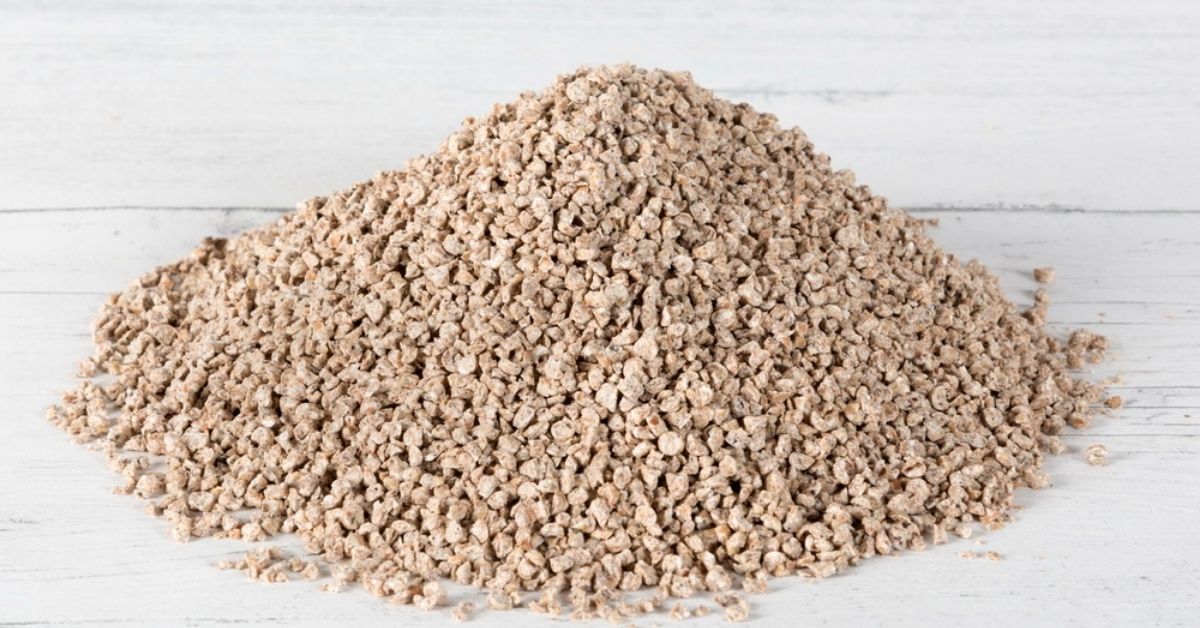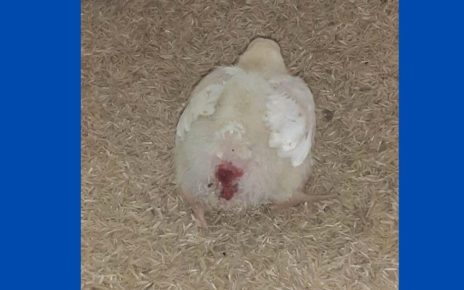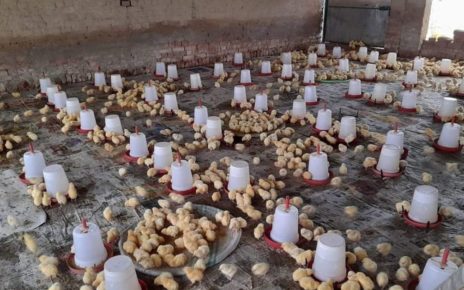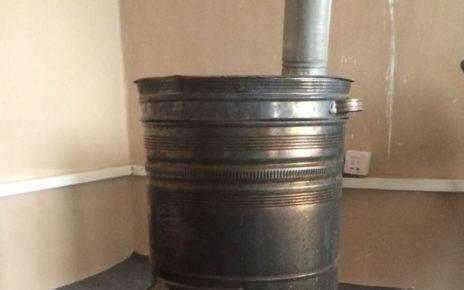Maize/Corn–
- Maize is the major energy source used in Poultry Feed diets in most of the countries because of its easy availability, easy storage & high-energy value and high digestibility.
- Dry maize contains the highest amount of energy ME 3350 kcal/kg & 8-13% of Crude Protein. In very dry state its values can be increased.
- Maize can be included up to 70% in poultry Ration.
- While Purchase of Maize remember maize, Maize must be dry, fungus free and moisture content should be then 13.5 %.
- Less moisture content of Maize in Poultry Feed will accelerate good growth rate in Broiler Birds.
How to check Maize Moisture at home –
To Test Moisture content, you can use a moisture meter which is highly recommended.
You can use a traditional method. Poultry Farmers can use a simple method to check if their maize is dry enough for storage by the use of an empty transparent bottle and some normal salt. Before Purchase maize, put a handful of Maize and ½ handful of common dry table salt in a dry bottle. Shake the bottle for 2 -3 minutes. Allow the grains to settle at the bottom of the bottle. If the salt sticks onto the walls of the transparent bottle, this is a sign that the maize is not dried well enough for storage. Otherwise Dry the maize and repeat the test until no salt sticks to the sides of the bottle. The maize can then be stored and there is no danger of it developing mould or aflatoxins during storage.
Soya bean meal for Poultry Feed –
- Soya bean meal contains 45-49% protein and is an excellent source of lysine, tryptophan and threonine but it is deficient in methionine.
- Raw soybeans may contain a number of toxic and inhibitory substances. These toxic, inhibitory substances and other factors in soya bean like saponins can be inactivated by proper heat treatment during processing. So it’s better to purchase from a reliable source. It can be included up to 35% in chick’s poultry Feed.
Complete Poultry Training – Link
Use of oil in poultry Feed- Oil Are Rich in energy. Oils are also an important carrier for fat soluble vitamins A, D, E, and K. A variety of fats and oils are used in Poultry Feed Formulation Like Palm oil, Sunflower oil, Rice Bran Oil, Soya Oil,canola,rapeseed oil, sunflower oil, linseed oil, palm oil, cottonseed oil etc. & Tallow or Animal Fat also used In Poultry feed formulation.
In practical Poultry Feed formulation, the level of oils rarely exceeds 4% in Poultry Feed Formulations.
Lime Stone Powder for poultry Feed-Lime Stone Powder is a major source of calcium or an important part in the Poultry Feed to maintain bone strength.
Dicalcium Phosphate poultry Feed- Dicalcium Phosphate is also an important source of calcium or an important part in the Poultry Feed especially for Vegetarian Poultry feed Formulation.
Before Understanding below Poultry Feed additive, please don’t get confused about large range of Feed Additive. All below Feed additives can be very easily purchased From a Single Poultry Supplement shop.
Sodium Chloride ( NaCl) poultry Feed– chickens need between 0.12% to 0.2% sodium in the Poultry Feed Formulation . If measured as NaCl or “salt,” it should be 0.4-0.6%.
Sodium is also available in Soybean meal & Maize but additionally Sodium Chloride is also added in poultry feed in different quantities depending upon Poultry Feed Formulation. Without salt, growth is slowed, and chicks are dull .Sodium deficiency can may cause birds to collapse and die suddenly; opening up the body cavity will reveal fluid accumulations around the lungs and heart. (Known as broiler ascites syndrome) .Appetite of Poultry birds may decrease & pecking behaviour (Birds biting each Other) may increase. So maintaining the Sodium Level is also Very Important.
Sodium Bicarbonate for poultry Feed-Broiler Poultry Feed Intake and growth rate can be improved by supplementing the diet with sodium bicarbonate. Bicarbonate ion and is associated with an increase in water consumption.
Some studies show that Sodium bicarbonate increases digestibility.
DL-Methionine for poultry Feed- It is actively involved in the synthesis of tissue proteins, a number of vitamins, hormones, and enzymes .Lack of methionine deficiency can cause leg dermatitis in chickens. It also improves Growth and Stress.
Lysine for poultry Feed- Sufficient amount of Lysine in Poultry feed Improves calcium Absorption, Growth and Reduce Stress-Lysine concentration significantly influences on the growth performance and feed efficiency. Inclusion of lysine in the diets and poultry It helps to justify the basis of low cost Poultry Feed formulation and also enables to balance the diet to meet the birds requirements more closely.
Threonine for poultry Feed- Improves Growth and Reduce Stress & also improves Breast meat.
Choline Chloride for poultry Feed– Choline Chloride helps in fat metabolism in the liver, i.e. utilization and outward transport of fat, so preventing abnormal accumulation of fat within hepatocytes – so-called “fatty liver.
Many studies shows that, after adding choline chloride, very good weight gain results in less feed consumption.
Trace Minerals Combination for poultry Feed-Many Companies Provide trace minerals for broiler feed formulation. But because of cost competition many companies don’t add Selenium and Chromium in sufficient quantities in trace minerals. So please cross check whether Selenium and Chromium is available in trace minerals in sufficient quantity or not.
In most cases you have to add additionally Selenium and Chromium of a reputed company as per recommended dose.
You can increase the dose of Trace Minerals 10 %. I personally found it helps to decrease mortality & improve performance.
Broiler Premix Vitamins for poultry Feed– I noticed many companies provides balance combination of all vitamins ,but because of cost competition ,many
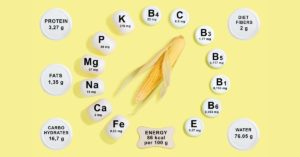
companies miss Vitamin E ,C and Biotin in the Broiler Premix, So never forget to add additional Vitamin Vitamin C and Biotin if not available in Sufficient quantity.
You can increase the dose of Broiler premix 10 %. I personally found it helps to decrease mortality & improve performance.
Mycotoxin Binder for poultry Feed– Traditionally many poultry Farmers use Toxin binder, it’s a good idea, but I personally recommend Mycotoxin Binder rather than Simple Toxin Binder. .
Mycotoxin binder is a substance that is added to Broiler Feed Formulation in order to trap Mycotoxins, preventing them from entering the bloodstream where they can cause serious harm to your Poultry’s Birds.
If you have any doubt about little down of Ingredients. While making poultry feed Using a Toxin binder along With Mycotoxin Binder is also a good idea to improve performance of Broiler Poultry Feed Formulation.
Many companies provide Mycotoxin Binder, easily available in the market.
Acidifiers for poultry Feed- The major purpose of using this acidifier in Poultry feed Formulation is to improve growth performance and better the profitability in poultry production. Acidifiers have multi usages in poultry feeds as they help in preservation to control microbial growth, reduction of the feed buffer capacity, inhibition of pathogenic bacteria and betterment of nutrient digestibility.
It is important that poultry birds keep a low gastric pH, so they can activate enzymes which are critical for protein digestion. This low pH also curbs pathogens. Pathogenic microbes compete with the birds for vital nutrients in feed and grow quickly which higher pH leading to harm in health and productivity of the birds. Acidifiers are very effective in decreasing bacterial load resulting less mortality at Poultry farm
Liver Tonic Powder for poultry Feed– Herbal/Synthetic -Liver Tonic Helps To Improve Liver Performance or Flush out toxins from the Body. It is highly recommended to add Tricholine based Liver tonic or Herbal Liver Tonic In poultry feed Formulation. It has been noticed broiler birds gain better weight gain.
Anticoccidials uses and precaution in poultry-
Anticoccidial defined as an antiprotozoal agents used for the prevention & control of coccidiosis are called Anticoccidial & Must be used with proper method of rotation & Shuttle every important things will be covered in this part. First understand the types of anticoccidials. There are many types of
1- Chemical /Synthetics Anticoccidial
Compound produced in the laboratory rather than natural ingredients or product synthesis from chemicals. So it’s often referred as chemicals
Robenidine
Ethopabate
Aprinocid
Clopidol
Decoquinate
Diclazuril
Dinitolmide ( zoaline)
Halofuginone
Nicarbazin
& More
2-Ionophore
a)-Monovalent Ionophores , b) Monovalent Glycoside C)Diavelent D) Combination of two Anticoccidials
a)-Monovalent Ionophores.
Monensin, Narasin and Salinomycin
Are highly reaction with Tiamulin Hydrogen Sulphate
Be careful while making poultry feed.
- b) Monovalent Glycoside.
Maduramicin and Semduramicin
3- Divalent Ionophores.
Lasalocid Sodium.
4-Mixed Anticoccidials.
It is defined as a mixer of two or more anticoccidials of either synthetic & chemical origin. Eg Narasin+Nicarbazine
Or Maduramicin with Nicarbazin.
Now a question arises here how and which to use. It Depends on the Climate of your Region. Sometimes it also depends on the severity of Cocci in a particular area.
Withdrawal period means, before selling birds all antibiotics & Anticoccidials will be withdrawn from poultry feed , so that no side effect on the people who consume the same chickens.
There are many way to use Anticoccidials.
Straight Method for anticoccidials in poultry feed –
Some Feed miller or Poultry farmers Follow the single Product use in Poultry feed from pre starter to Finisher Poultry feed. With a withdrawal period of 3–7 days. Most products are approved for use until slaughter.
As per my experience in dealing with Poultry Feed Mills , I personally don’t recommend this method.
- B) Shuttle Method for anticoccidials in poultry feed.
The use of one product in the, Prestarter,Starter feed and another in the grower Poultry Feed or Same anti coccidiosis in PrestarterStarter and another in the grower Poultry Feed for the purpose of prevention & control of coccidiosis is called a shuttle program .This programs mostly used for commercial broiler poultry Farming.
I highly recommend this & it is very effective in Poultry to control coccidiosis
- Rotation of anticoccidials .
Rotation of drugs may improve productivity. When a product is used continuously for a long time less efficacy of product has been noticed
Producers often notice a boost in productivity for a few months after a change of anticoccidial drugs at time of rotation period in the field.
In the rainy season and winter there is a wet litter issue in Poultry farm & Broiler Birds face maximum coccidiosis challenge Nicarbazin or Combination with Maduramicin & Nicarbazin & Combination of 2 Anticoccidial has been found more effective
In the summer months, coccidiosis challenge tends to be milder, so weaker Ionophores (mentioned above ) are used in this rotation program found successful.
In short use Different Anticoccidial in Starter/Prestarter and Different in Finisher Poultry Feed Formulation.
In Summer Ionophores Ionophores (Monovalent Ionophores , b) Monovalent Glycoside C)Diavelent ) should be used in Finisher & Chemical Anticoccidials should be used in starter
In the Winter or rainy season when there is a high chance of cocci at your poultry farm,then you can use Ionophore in Starter & You can use Combination with Maduramicin & Nicarbazin or Combination of 2 Anticoccidial has been found more effective.
And always Keep Changing the Anticoccidials maintaining withdrawal period as per norms of your country or manufacturer Guidance.
Gut Acting Antibiotics use in poultry feed – Healthy gut healthy business. A healthy gut is key to a healthy bird.A healthy gut is not only a gut without disease; a healthy gut is an effective digestive organ that can mount an effective defense against disease and cope with change.
The gut is the bird’s largest organ where digested feed and water are absorbed so disease-causing agents must be kept under control. The gut is also the organ that generates the most immunity.So keep it healthy and away from any disease is very important.
Zinc Bacitracin(ZB) ,Bacitracin Methylene Disalicylate (BMD) & Many many Gut antibiotics are available and should be used as per your country norms and Regulation to increase performance as per manufacturer guidance.
Broad-spectrum antibiotic Growth promoters – Antibiotics help make food safe by keeping chickens healthy and reducing bacteria entering the food supply.Responsible use of antibiotics helps keep chickens healthy and minimizes the impact on the environment. Antibiotics are used to fight bacterial infections
Chlortetracycline is commonly used in Poultry. It also works on gram positive and gram negative bacteria.
There are many alternatives available and antibiotics should be rotated after a couple of batches for more effectiveness & withdrawal period must be followed as per manufacturer’s guidance and rules and regulation of your country.
Anti-Mycoplasma Antibiotics in poultry feed-
Remember, healthy looking birds may already have Mycoplasma, it may take up to 3 weeks before birds start to look and act sick or they may never act sick but still carry the disease and infect other birds. Bird’s sick with MG may have similar signs to what people get with a cold: runny nose, cough or unusual breathing sounds, and swollen or puffy eyelids and face. Bird’s sick with MS may have problems standing or walking, a pale or discolored comb, blotchy skin, ruffled feathers and swollen joints and blisters. Also, birds may be quieter, eat less and lose weight.
So to maintain bird health Anti Mycoplasma Antibiotics are used in poultry.
In Poultry Feed Tylosin,Erythromycin,Tiamulin,Lincomycin are many more are used as per guidance of manufacturer and rules and regulation of your country followed by withdrawal period.
Xylanase use in poultry feed- Xylanases can can improve overall feed efficiency
, thereby lowering production costs by reducing gut viscosity and increasing the access of digestive enzymes to the contents of plant cell walls in the diet.
Further benefits include increased boiler uniformity and a reduction in litter moisture content resulting in Less Formation of Ammonia Gases at Your Poultry farm.
Phytase uses in poultry feed-There is Huge amount of Phosphorus is available in poultry feed but not utilized by the broiler birds. After adding phytase to the Poultry Feed formulation, Extra phosphorus is easily available to poultry birds and less quantity of phosphorus is required to be added. It Lowers the feed cost and also helps to unlock many other nutrients for the poultry birds.
If more phosphorus is available naturally, then less of this substance has to be added to the diet. This greatly reduces feed costs.
It is available in the market in 2500 I.U, 5000 I.U., and 10,000 I.U.
You can increase the dose of Phytase. Upto 1.5 to 2 times.
The recommendation is around 100 gram / Ton of poultry feed of 5000 I.U
But you can increase the dose 150 gram to 200 gram /ton of poultry feed.
Copper Sulphate uses in poultry feed- Copper Sulfate for chickens has always been working as an anti-fungal and mould inhibitor in Poultry Feed Formulation. FCR is very much improved in Broilers
Probiotics uses in poultry feed- Poultry probiotics are defined as live microorganisms promoting enteric microbiota balance. Probiotics help to maintain a healthy gut & better immunity. It’s Just like giving Curd to your birds to improve productivity.
So you should choose a combination of many probiotics, easily available in the market.
Emulsifiers uses in poultry feed-Emulsifiers are used in poultry nutrition for improving poultry performance, digestibility of the nutrients, especially fats.
Emulsifiers are the best way to improve oil digestion resulting in better performance of Poultry Birds.
Antioxidants uses in poultry feed- Using Good Antioxidant is very much important otherwise oxidation can
Destroy fat soluble vitamins,
Reduce the digestibility of fat,
- Reduce the energy content of the feed
- Antioxidants slow down the oxidative process by sacrificing themselves for consumption by free radicals before the fat or vitamin molecules can be attacked.
In Short Antioxidant Maintain Feed Quality for a long Time by saving Feed from Oxidation.
MOS( Mannan-oligosaccharides) uses in poultry feed- MOS acts as prebiotics, Food of Probiotic. It also acts as an Immunomodulator and also helps Combat Many Toxins present in Poultry feed.
Turmeric Powder uses in poultry feed– It has been found that the feeding of turmeric powder in the poultry diet helped to improve the morbidity and mortality of broiler Poultry Feed. It is also proven that the use of turmeric in poultry feed is helpful for the public health with no side effects. It is also helpful for the poultry farmers, who are not able to use antibiotics.
Betaine uses in poultry feed –In Summer Can be added to reduce stress.
Many Poultry Farmers Don’t Get Best Results, when they make feed on their own Poultry Feed Formulation.
In This Article we will discuss, how to get better results from Broiler Poultry Feed and less disease, less mortality and better F.C.R. and important precaution to save yourself from making a blunder. So don’t forgot to read the precautions carefully.
F.C.R.-Feed Conversion Ratio- Average Total feed Intake by Bird divided by average Weight of Poultry birds with basic ingredients of Soy Meal, Maize & Oil. And all other Feed Additives can be easily purchased from a single Poultry Supplement Shop. The benefit of Vegetarian Feed Formulation, there are negligible chance of contamination as compare to Non Veg Feed (Feed Contain meat and Bone meal, Fish meal, Blood meat, Fish meal, etc.) and it’s very difficult to store.
In This Article nothing has been emphasized more technically. In Short, I am sharing my more than 20 year experience of dealing with Poultry Feed Manufacturer & Poultry Farmers in very easy language.
So below Precautions & Tips Should be taken care While Making Own Poultry Mash/Crumbs Feed.
Tip1- Every Manufacturer has different Dose of below Products. So Dose of below Products are As per Manufacturer Recommendation. Companies usually mention dose and sometimes also mention maximum and minimum dose.
2-If Your vitamin Premix Does Not contain Chromium ,Selenium,Biotin,Vitamin C or Vitamin E then you must add additionally as per manufacturers recommended dose.
In Hot Climate or at time peak summer in Hot Areas Betaine also should be added in poultry feed as per manufacturer recommendation. Betaine can be added in winter also it increases carcass yield & breast percentage.
3– Pre Starter Poultry Feed Formulation is recommended till the Birds reaches around 400 Gram. Starter Poultry Feed Formulation is recommended up to 1200 Gram and Finisher Poultry Feed Formulation is recommended up to selling of Birds.
4– Always Have Sufficient Advance Stock of each and every Ingredients.
5– Some Anticoccidials React with Antibiotics. Example- ( Salinomycin reacts with Tiamulin Hydrogen Fumarate. So when Changing Different Anticoccidials , discuss with some consultant.
6-For Poultry Feed mixing, farmers are advised to use a Good Quality mixer .Never use a shovel to mix feed because the ingredients will be unevenly distributed.
7-Phytase enzyme dose is recommended 1.5 times extra of Company recommendation in Poultry Feed. (Example if any company recommends 100 gram dose, you can increase the dose 150 gram.
8-Poultry Feed must be grind well, Large Poultry Feed particles don’t have better digestibility.
9-Poultry Feed must be mixed properly & oil mixing also should be well. First mix oil and all Medicine/supplements in a few feeds then mix with complete feed.
10-While making Poultry Feed, not a single product must be missed & to be mixed in Recommended dose.
11- Every Antibiotics & Anticoccodials have its Withdraw Period. So before selling birds withdraw Antibiotics or Anticoccidials before selling birds. As per recommendation of manufacturer or as per your country/Region Norms.
12- Every Product to be used in Poultry feed must be purchased before checking of Expiry date.
13-Always use the products of a well reputed company.
14- It is always recommended to use crumbs feed, sourced from a good company than shift to your Own mash feed.
15- Never shift from one type of Poultry Feed to another type of feed immediately. Example- If Shifting from crumbs to other feed. First mix the crumbs and mash feed by Ratio of 50%-50% and feed this feed for minimum 1 day.Then shit to mash Poultry Feed. Do the same while shifting to Pre starter to Starter & Starter to finisher Poultry Feed. Motive is not to provide immediate change in energy and protein.
16- While purchasing all the ingredients for Poultry Feed like Maize, Soyabean DOC and oil must be properly checked. Soybean DOC & Maize must be free from Fungus & Dry, to be purchased very carefully with strict precautions. Moisture in Maize is less than 14 % is recommended & moisture in Soybean DOC around 11% is recommended.
17-Never Purchase used bags for storage of Feed Bags to Store Poultry Feed. Bags must be purchased to avoid Contamination.
18-Poultry Feed & all Supplements must be stored in a well dry place and avoid direct Sunlight.
19-Antibiotics must be used as per your country/Region norms. If you’re Country’s Government doesn’t allow any antibiotics, never violate Rules.
20-Antibiotics must be used after Consultant Approval.
21- Antibiotics also should be changed after Couple of Batches.
22- Anticoccidials should be changed after Couple of Batches.
| For broiler Feed Formulation You can Purchase Feed Formulation very economical price in Paid Post For Unlimited profit. email – poultryindiatv@gmail.com |
| Nutritional Standards For Broilers | |||
| Parameters | Prestarter | Starter | Finisher |
| Crude Protein %
ME (Kcal/kg) % Dig Lysine % Dig Methonine % Dig M+C % Dig Arginine % Dig Threonine % Dig Tryptophon % Calcium % Available Phosphorus % Sodium (Min.) % Potassium (min) % Chloride (max.) % Na++K-Cl mEq |
23.00
3000.00 1.21 0.54 0.88 1.25 0.80 0.19 0.90 0.50 0.16 0.55 0.30 250.00 |
22.00 3100.00 1.12 0.50 0.81 1.16 0.74 0.18 0.85 0.48 0.16 0.55 0.30 250.00
|
21.00 3200.00 1.01 0.45 0.76 1.07 0.68 0.16 0.80 0.46 0.16 0.55 0.30 250.00
|
As per breed the requirements of nutrients are slightly different for broiler birds.
